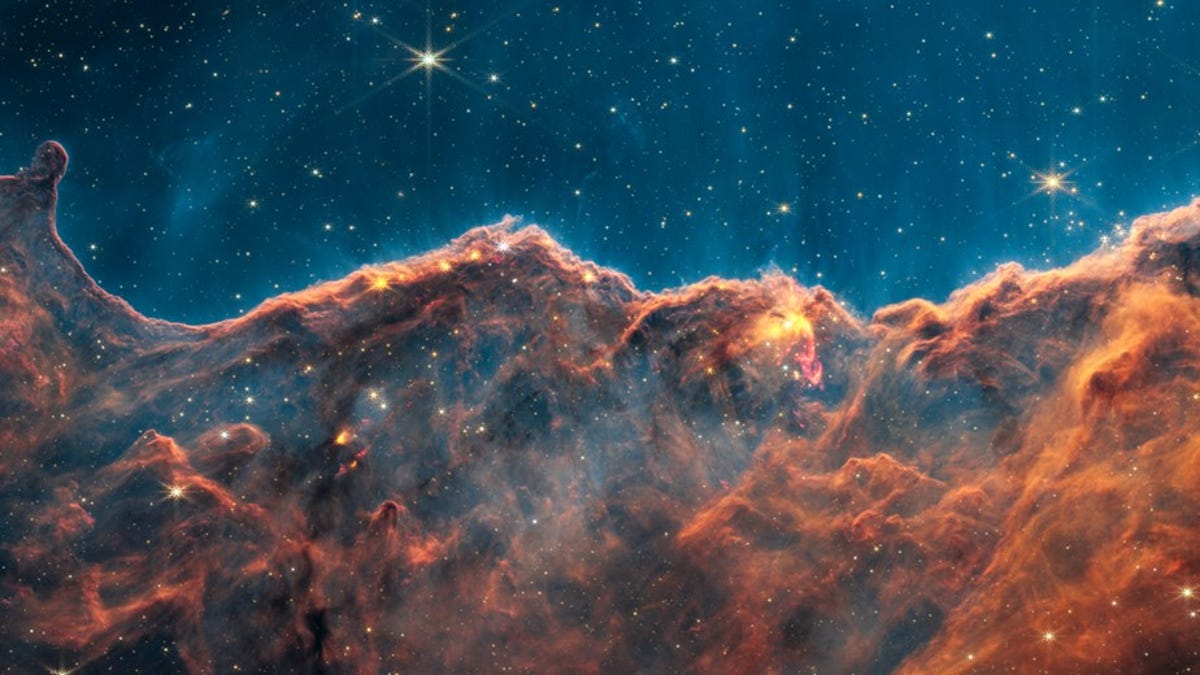Scientists Find 'Buried Treasure' in Stellar NASA Webb Telescope Image
A deeper look at one of the next-gen telescope's first images reveals newborn stars in a rarely seen stage of development.

Image of the Cosmic Cliffs, a region at the edge of a gigantic, gaseous cavity within NGC 3324, captured by Webb's Near-Infrared Camera (NIRCam).
Thanks to NASA's highly advanced James Webb Space Telescope, astronomers are taking a closer look at one of the observatory's most entrancing early images and marveling at what they've discovered.
Scientists aimed Webb's infrared instruments at the so-called "Cosmic Cliffs" within the massive Carina Nebula and, more specifically, the star cluster NGC 3324. The resulting images were in the very first batch of observations we saw from the new telescope back in July, but now researchers have analyzed the data more closely and found a crop of newborn stars in a rarely seen stage of development.
The Hubble telescope has observed this corner of the universe in the past, but Webb's infrared eyes emable it to see through clouds of dust and gas for the first time to discover dozens of energetic jets of material blasting forth from the young stars.
"Jets like these are signposts for the most exciting part of the star formation process. We only see them during a brief window of time when the protostar is actively accreting," explained researcher Nathan Smith from the University of Arizona, in a statement.
That window is just a few thousand years out of the several million it takes a star to fully form. It's a bit like Hubble allowed us to spy a stellar nursery from across the cosmos, but Webb has let astronomers throw open the doors to that nursery to get a glimpse at how the nuclear-powered newborns inside are growing and developing.
Smith is co-author of a paper outlining the discovery published this month in Monthly Notices of the Royal Astronomical Society.
"In the image first released in July, you see hints of this activity, but these jets are only visible when you embark on that deep dive -- dissecting data from each of the different filters and analyzing each area alone," added team member Jon Morse from CalTech. "It's like finding buried treasure."
The researchers say the discovery could initiate a new era of better understanding how stars like our sun form and how all the radiation from star formation, in turn, affects the developments of nearby planets.
That's all incredibly useful knowledge to have when deciding where to focus our search for other Earth-like worlds that might harbor life.

